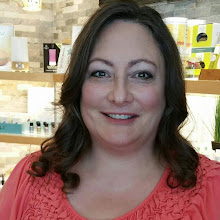The black marble has been carved into the shape of a tractor tire. On one side of the stone are the names and birthdates of my husband’s parents, the date of their wedding, the cross-and-flame symbol of the United Methodist Church, and a picture of my father-in-law’s beloved John Deere tractor. On the reverse side are the names of others I love: my husband, my three children, my brother-in-law, and his children. It is the gravestone for two people who still live, although time and health will change that all too soon.
I have always had a fascination with cemeteries. There is something very sobering and life-affirming about walking through a cemetery. I look at the very old stones, thinking about people living full lives so long ago. Or maybe I think about the shortness of their lives as I see the birth and death dates of children or of young women who surely died in childbirth. I am struck by the overlapping of lives; people come and go, all part of this one same community.
In the farmland of central Illinois, the windows blow in from the west, picking up power across the plains. The cemetery is at the edge of town, between the state highway and the corn and soybean fields that have sustained this town for generations. It is a community I married into. I still feel like an outsider, although I have been welcomed with open arms.
My daughter is also fascinated by cemeteries, especially the very old stones and clusters of graves of people in the same families. Yesterday we drove down to the farm. My husband’s brother lives there with his family—the third generation of Taylors to live there. Typically when we come down, it’s a big occasion, with all sorts of relatives gathering because we don’t see them very often. The original plan was that tomorrow, Easter Sunday, would bring my mother-in-law’s family all together. Sadly, her brother died last week and all the relatives are traveling to Connecticut for the funeral. So this time, it’s just us with my brother-in-law and his family. As a result, this is a very low-key and laid-back visit. Instead of having to make preparations for a huge family gathering of 20 people, it’s just our two families and we’ve had a lot more down-time than usual. My daughter asked me to take her to the cemetery so she could look at the stones.
After I pointed out the graves of some of her ancestors and relatives, Becky wandered off to look for old gravestones. I stayed with the relatives and remembered the people I’d known and regretted the fact that I had never known a few of the relatives buried there. I thought about how my husband and children were part of this community. Their names were on someone’s gravestone, and they were connected to these people. I, on the other hand, was not. I was a visitor, a passerby. But then I looked around at some of the names. I realized that I had written thank-you notes for my wedding shower and baby shower gifts to many of the women buried there. In fact, some of the dish towels I received from those women are worn but still in use in my kitchen. At that point, I realized that even though I wasn’t part of this community, the community was part of me.
As I looked back at my in-laws’ gravestone, I realized that I was part of this community after all, if only in a peripheral way. Every time my mother-in-law shared a story about our life events—pregnancies, job changes, baptisms, school events, health issues, and more—our lives became part of the fabric of the community. My children are Taylors—a family that has been here more than 100 years. We helped pay for the stained glass window in the narthex of the church—finished just the week before our wedding.
I stood in the cemetery yesterday at the age of 44, feeling very sobered. For a few moments, I felt more connected to the history of the community than to the present and future. My life is more than half over, and there are times I wonder if I’ve made any difference at all while I’ve been here and if there’s any time left to make up for lost opportunities. Then I looked at my 14-year old daughter in her young woman’s body, with all the hope of the future in her soul even while she looked back into the past. And I knew that there in the place of loss and permanence was the miracle of life and living. Right next to the gravestones marked with my family’s names, where I will bring flowers in just a few years, were two graves where someone had hung windchimes. I untangled the windchimes and listened to the beautiful music brought to this cemetery by the winds from the west and knew that we make a difference one moment at a time.
Sunday, April 12, 2009
Subscribe to:
Post Comments (Atom)
Flashlight Worthy Book Lists
the newest lists of book recommendationsthe best book recommendations are found at Flashlight Worthy
add this widget to your blog

No comments:
Post a Comment